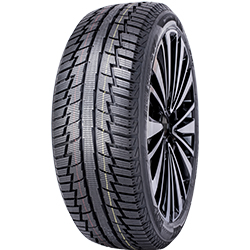


Nowadays, with the increasing strictness of driver's license exams and traffic regulations, many car owners attach great importance to driving safety, especially in the summer when the temperature is relatively high, which is a high-risk period for tire blowouts. If there are scratches on the sidewall of our car's tires, can we go on the highway? I believe this issue has troubled and entangled many friends, as many car owners are not familiar with the structure of tires, so any scratch on the tire wall will make them very nervous. Actually, can tire wall scratches be used on highways? Can the tire continue to be used? There are also many situations that need to be analyzed based on specific circumstances.

A tire is not a single layer of rubber, it is a combination of multiple layers of rubber and some composite materials. The innermost layer belongs to its airtight layer, with a support layer and curtain layer in the middle, and a rubber layer on the outermost layer. Let's take a look again, its sidewall is indeed much thinner than the tire crown, so scratches on the sidewall can cause more serious damage to the tire than on the crown. Can we run on the highway after our tire sidewall is injured? We can open the scratched area and take a look. If it doesn't reach deep into the curtain layer, that is to say, the sidewall curtain line hasn't been broken, this kind of damage actually has little impact on the safety of the tire.
For example, the curtain layer of a tire is like the layer that bears weight and strength during the construction of our house. Therefore, if there is water seepage in your house, white lime will fall off, but the house will not collapse and will not affect its structure and strength. However, we still need to pay close attention to one thing here. Some tires may not have open wounds on the sidewall, but they may have internal injuries. For example, if the tire is compressed to the curb, it may be severely compressed. If the tire wall is relatively firm, there will be no open scratches. However, over time, the area where the tire is compressed will gradually swell due to the stretching or breaking of the curtain line inside it. Once the tire bulges, regardless of whether your tire has wounds or not, it must be replaced because the bulge point represents that the curtain line inside it has been damaged. Once bulging occurs, it may be caused by high temperature and speed on the highway. If it's a little faster and squeezed a little harder, there may be a tire blowout.
So, theoretically, as long as the tire curtain line is not damaged after rubbing or scratching the sidewall of our tire, it means that the tire is safe without bulging. If you are really worried about driving on the highway, you can also take a more conservative approach, which is to put the front tire on the back tire, so that you can drive with peace of mind. If your car has a good quality full-size spare tire, you can replace the damaged tire. It is not a problem to use the removed tire as a low-speed emergency.
Finally, I would like to remind all car owners that although our tires may be scratched at times and there may be bulges in the scratched areas over time, it is important to develop a habit of checking our tires regularly. It is recommended that you check your tires every week to half a month to develop good driving habits and ensure our safety.